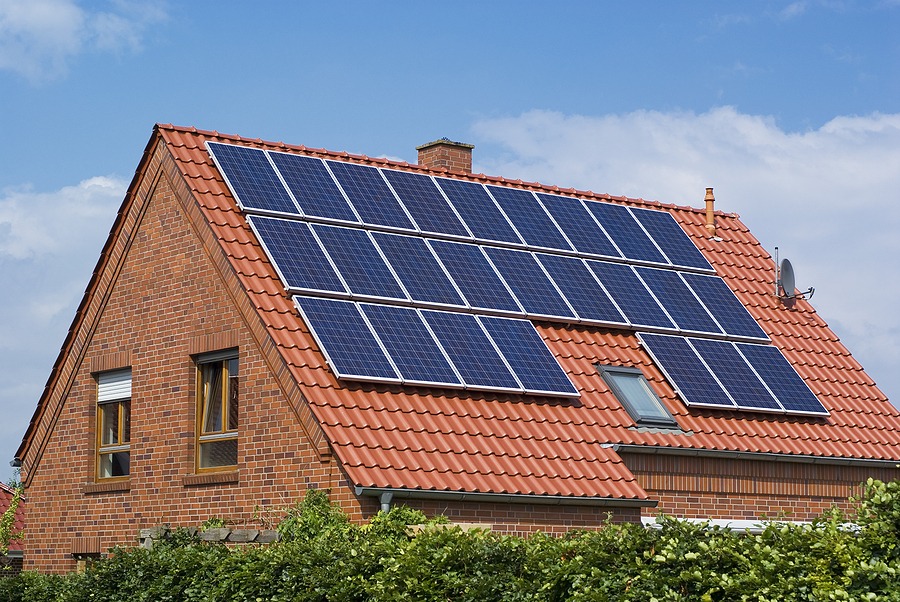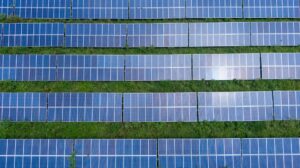Solar power has emerged as a sustainable and environmentally friendly solution to meet our growing energy demands. By harnessing the power of the sun, solar panels can generate electricity while reducing our carbon footprint. However, to make the most of solar energy, it is crucial to consider the orientation, size, and type of a house in order to optimize solar panel efficiency. In this blog post, we will delve into the factors that influence solar panel performance and explore how house orientation, size, and type play a vital role in maximizing solar energy generation.
Understanding Solar Panel Efficiency
Before we delve into the impact of house orientation, size, and type, let's briefly understand the factors that affect solar panel efficiency. Solar panels generate electricity by converting sunlight into usable energy through photovoltaic cells. The efficiency of a solar panel refers to its ability to convert sunlight into electricity. Various factors affect the overall efficiency of a solar panel system, including:
- Sunlight intensity: The amount of sunlight received by the solar panels affects their performance. Regions with high solar irradiation are more conducive for solar energy generation.
- Temperature: Solar panels operate more efficiently at lower temperatures. Excessive heat can reduce their efficiency.
- Shading: Shade from nearby buildings, trees, or other obstructions can significantly reduce solar panel output. Ensuring minimal shading is crucial for optimal performance.
- Tilt angle and direction: The tilt angle and orientation of solar panels affect their exposure to sunlight. The ideal angle and direction vary depending on the geographical location.
House Orientation
The orientation of a house plays a critical role in maximizing solar panel efficiency. The general rule of thumb is to position solar panels on the roof facing south (in the northern hemisphere) or north (in the southern hemisphere). This allows for maximum exposure to sunlight throughout the day. East or west-facing orientations can also be viable, but they may result in slightly reduced energy production.
To determine the best orientation for solar panels, consider the latitude of your location. In the northern hemisphere, adjusting the tilt angle to match the latitude can optimize energy generation. In the southern hemisphere, tilting the panels at the latitude angle plus 15 degrees can be beneficial. However, these values can vary depending on local conditions, so consulting with a solar professional is recommended for precise calculations.
House Size
The size of your house is another important factor to consider when planning solar panel installation. The more roof space available, the larger the solar array you can install, resulting in increased energy production. Larger houses typically have a greater potential for accommodating a larger number of solar panels. However, it's important to strike a balance between the size of the solar array and the energy consumption needs of the household.
If your house has limited roof space, you can explore alternative options such as ground-mounted solar panels or integrating solar panels into other structures like carports or pergolas. These options can help maximize energy generation even if roof space is limited.
House Type
Different house types present varying opportunities and challenges for solar panel installation. Let's explore a few common house types and their implications for solar panel efficiency:
- Single-story vs. multi-story houses: Single-story houses typically have a larger roof area available for solar panel installation, making them more suitable for maximizing solar energy generation. Multi-story houses might have limited roof space due to multiple levels, but creative solutions like solar panels on different sections of the building or utilizing other structures can still make solar installation viable.
- Flat roofs vs. pitched roofs: Flat roofs provide more flexibility for solar panel installation since panels can be mounted at different angles. Pitched roofs, on the other hand, have a predetermined slope that needs to be considered during panel installation. However, regardless of the roof type, solar panels can still be efficiently installed with the help of tilt racks or ballasted systems.
Harnessing solar energy through the installation of solar panels is a sustainable solution for meeting our energy needs. By considering house orientation, size, and type, we can maximize solar panel efficiency and optimize energy generation. Remember to consult with solar professionals to assess your specific requirements and customize your solar system accordingly. By adopting solar power and taking advantage of an efficient setup, we can make significant strides towards a greener and more sustainable future.
Capitalizing on Arizona's Abundance of Sunny Days for Solar Panel Efficiency
Arizona, renowned for its abundant sunshine, offers a remarkable opportunity for harnessing solar energy. With its long, sunny days, the state provides an optimal environment for solar panel installations. In this blog post, we will explore the number of sunny days in Arizona using data from 2021, understand their impact on solar panel performance, and emphasize the advantages of maximizing solar energy generation in this region.
Arizona's Sunshine: A Renewable Energy Haven
Arizona boasts an exceptional amount of sunshine throughout the year, making it an ideal location for solar power generation. In 2021, the state continued to uphold its reputation as a renewable energy haven. On average, Arizona experiences approximately 300 sunny days annually, with certain regions reporting even higher numbers. This exceptional solar resource provides homeowners and businesses with an incredible opportunity to tap into the power of the sun.
The Impact of Sunny Days on Solar Panel Performance
The number of sunny days in Arizona has a direct influence on the performance of solar panels. Solar panels operate by converting sunlight into electricity through photovoltaic cells. The more sunlight available, the greater the energy generation potential. Let's examine a few key factors:
- Solar irradiation levels: Arizona benefits from high solar irradiation levels, resulting in an increased amount of sunlight reaching the Earth's surface. This higher intensity of sunlight translates into higher energy production for solar panels.
- Panel efficiency: Solar panels operate most efficiently when exposed to direct sunlight. With a surplus of sunny days, solar panels in Arizona have ample opportunity to operate at peak efficiency, maximizing electricity generation.
- Seasonal variations: Although Arizona boasts a significant number of sunny days, it's essential to consider seasonal variations. Winter months may have shorter daylight hours and lower sun angles, potentially reducing solar energy production compared to the longer and brighter summer days. However, even during these periods, solar panels can still contribute a substantial amount of energy.
Harnessing Solar Energy Potential in Arizona
Arizona's favorable climate presents an excellent opportunity for homeowners and businesses to harness the full potential of solar energy. Let's explore some key benefits of installing solar panels in Arizona:
- Cost savings: By capitalizing on the abundance of sunshine, homeowners can significantly reduce their reliance on traditional energy sources, resulting in substantial cost savings on electricity bills over time.
- Environmental impact: Solar energy is a clean and renewable source of power, producing no harmful emissions or greenhouse gasses. Utilizing solar panels in Arizona helps reduce carbon footprints and contributes to a more sustainable future.
- Energy independence: Generating electricity from solar panels allows homeowners to become more self-sufficient in meeting their energy needs. This independence provides stability and protection against fluctuating energy prices.
- Incentives and rebates: Arizona offers various incentives and rebates to promote solar energy adoption. These include federal tax credits, state-specific incentives, and net metering programs, allowing homeowners to earn credits for excess energy fed back into the grid.
Maximizing Solar Panel Performance
To maximize the performance of solar panels in Arizona, homeowners can consider the following strategies:
- Optimal panel placement: Properly orienting and tilting solar panels to capture the maximum amount of sunlight throughout the day is essential. South-facing orientations are typically recommended, but adjustments can be made based on the specific location and local conditions.
- Regular maintenance: Periodic inspection and maintenance of solar panels ensure optimal performance. Clearing away any dirt, debris, or shading obstructions will help maximize energy production.
- Battery storage: Installing battery storage systems alongside solar panels allows homeowners to store excess energy for use during periods of low sunlight or at night, further optimizing the benefits of solar energy.
- Working with solar professionals: Consulting with experienced solar professionals ensures the installation and setup of an efficient solar panel system tailored to the specific needs and conditions of the property.
Arizona's abundant sunny days make it a prime location for harnessing solar energy through the installation of solar panels. With an average of approximately 300 sunny days per year, homeowners and businesses in Arizona have an exceptional opportunity to capitalize on the power of the sun, reducing reliance on traditional energy sources and enjoying cost savings. By embracing solar energy and employing optimal strategies, Arizonans can contribute to a greener future while maximizing their solar panel efficiency.
Understanding the Average Pricing of Solar Panels in Arizona: Costs and Considerations
As solar energy continues to gain popularity, homeowners and businesses in Arizona are increasingly considering the installation of solar panels to reduce energy costs and embrace clean energy solutions. However, understanding the average pricing of solar panels in Arizona is crucial for making informed decisions. In this blog post, we will explore the factors that influence the cost of solar panels, discuss the average pricing in Arizona, and provide insights into considerations when investing in solar power.
Factors Affecting Solar Panel Costs
Several factors influence the pricing of solar panels in Arizona. Understanding these factors will help homeowners and businesses grasp the overall cost structure. Here are some key considerations:
- System size: The size of the solar panel system affects the overall cost. Larger systems require more panels and components, resulting in higher upfront expenses.
- Panel efficiency: Higher-efficiency panels often come with a premium price tag. While more efficient panels can generate greater electricity output in a smaller space, they tend to be more expensive.
- Material quality: The quality and durability of solar panels can impact their cost. High-quality panels typically have a longer lifespan and higher efficiency, but they may come at a higher price point.
- Installation complexity: Factors such as roof type, shading, and the need for additional electrical work can influence installation costs. Complex installations may require extra equipment or labor, impacting the overall pricing.
Average Pricing of Solar Panels in Arizona
The average pricing of solar panels in Arizona depends on various factors and can fluctuate over time. As of 2021, the average cost per watt for solar panels in Arizona ranges from $2.50 to $3.50. However, it is essential to note that this is just an average, and prices can vary based on the factors mentioned earlier. Other costs to consider include:
- Inverter costs: Inverters convert the direct current (DC) generated by solar panels into usable alternating current (AC) electricity. The cost of inverters varies based on the system size and type.
- Mounting and racking: Mounting and racking systems secure the solar panels to the roof or ground. The cost will depend on the complexity of the installation and the chosen mounting method.
- Balance of System (BOS) components: BOS components include wiring, cabling, electrical equipment, and monitoring systems. These costs should be factored in when calculating the overall system price.
Considerations When Investing in Solar Power
When investing in solar panels in Arizona, it is crucial to consider the following factors:
- Return on investment (ROI): Calculate the payback period and long-term savings potential of installing solar panels. Consider factors such as energy consumption, current utility rates, available incentives, and the projected lifespan of the solar panel system.
- Financing options: Evaluate the available financing options, such as cash purchases, solar loans, or lease/Power Purchase Agreement (PPA) models. Each option has its advantages and considerations, so choose the one that best aligns with your financial goals.
- Available incentives: Research federal, state, and local incentives, including tax credits, rebates, and net metering programs. These incentives can significantly reduce the overall cost of the solar panel system.
- Warranty and maintenance: Consider the warranties provided by manufacturers and installers for solar panels, inverters, and other components. Also, inquire about maintenance requirements and costs to ensure the system remains efficient and operational over its lifespan.
- Multiple quotes and reputable installers: Obtain multiple quotes from reputable solar installers in Arizona. Compare the pricing, equipment options, warranties, and customer reviews to ensure you choose a reliable and experienced installer.
Understanding the average pricing of solar panels in Arizona is essential for making informed decisions when investing in solar energy. While the average cost per watt ranges from $2.50 to $3.50, it is important to consider various factors that influence pricing. Assess your energy needs, evaluate the return on investment, explore available incentives, and choose a reputable installer to ensure a successful and cost-effective solar panel installation. By embracing solar power in Arizona, you can reduce energy costs, contribute to a cleaner environment, and embrace sustainable energy solutions.

Monday - Friday 7AM to 5PM
Saturday - by appointment only
We proudly serve Green Valley, Marana, Oro Valley, Saddlebrooke, Sahuarita, Tucson, Vail, and the surrounding areas.



